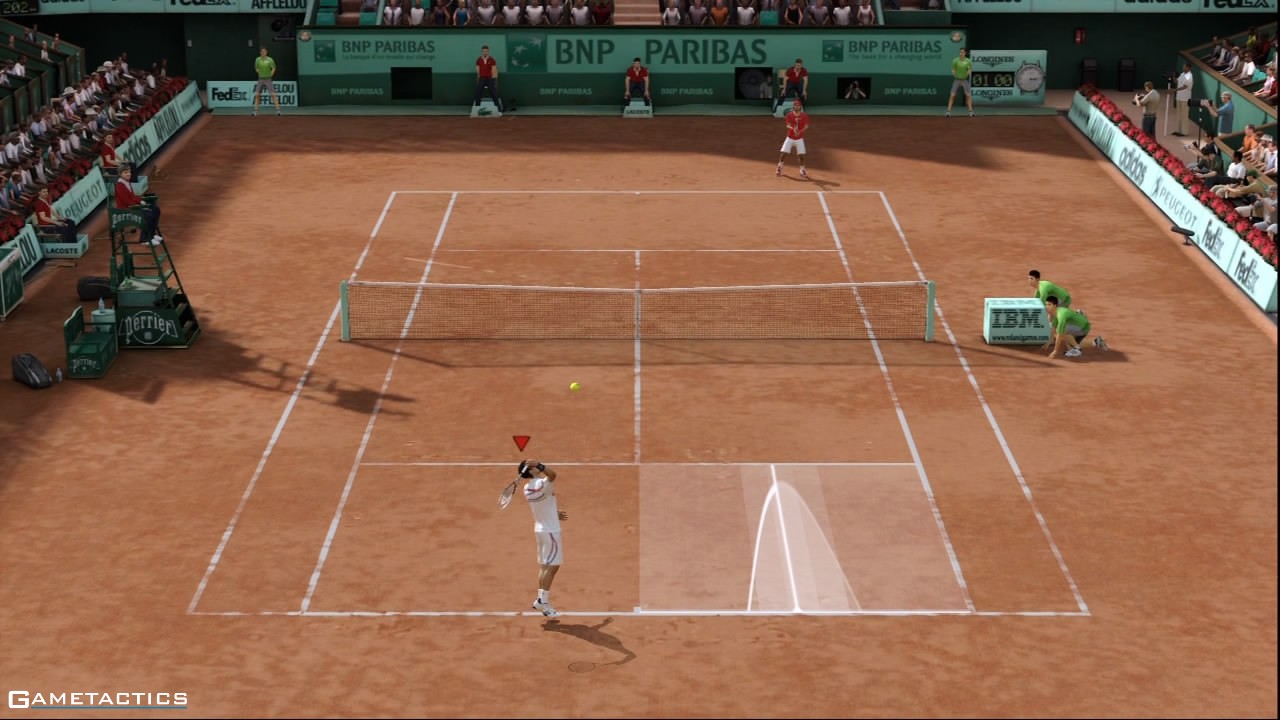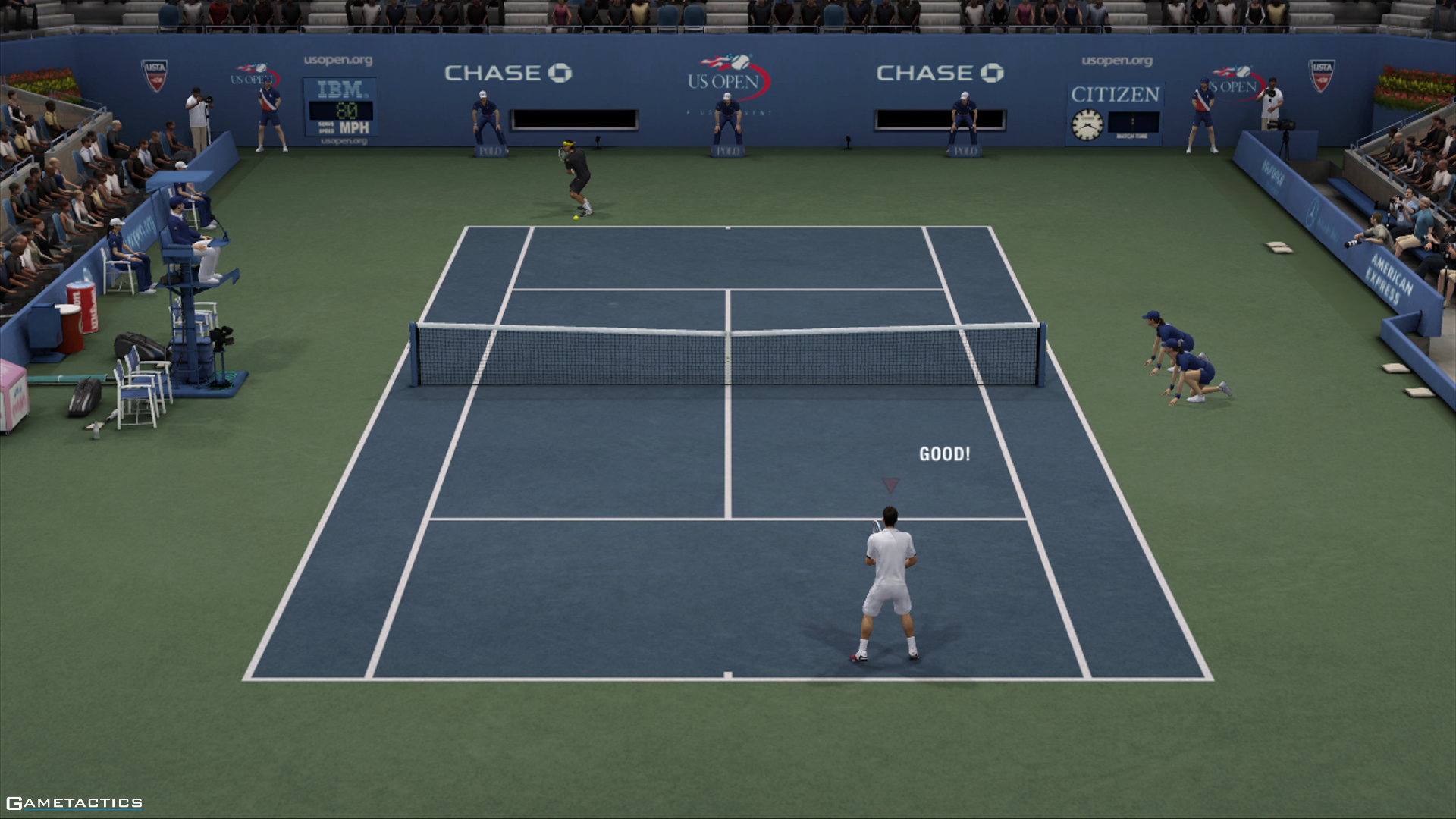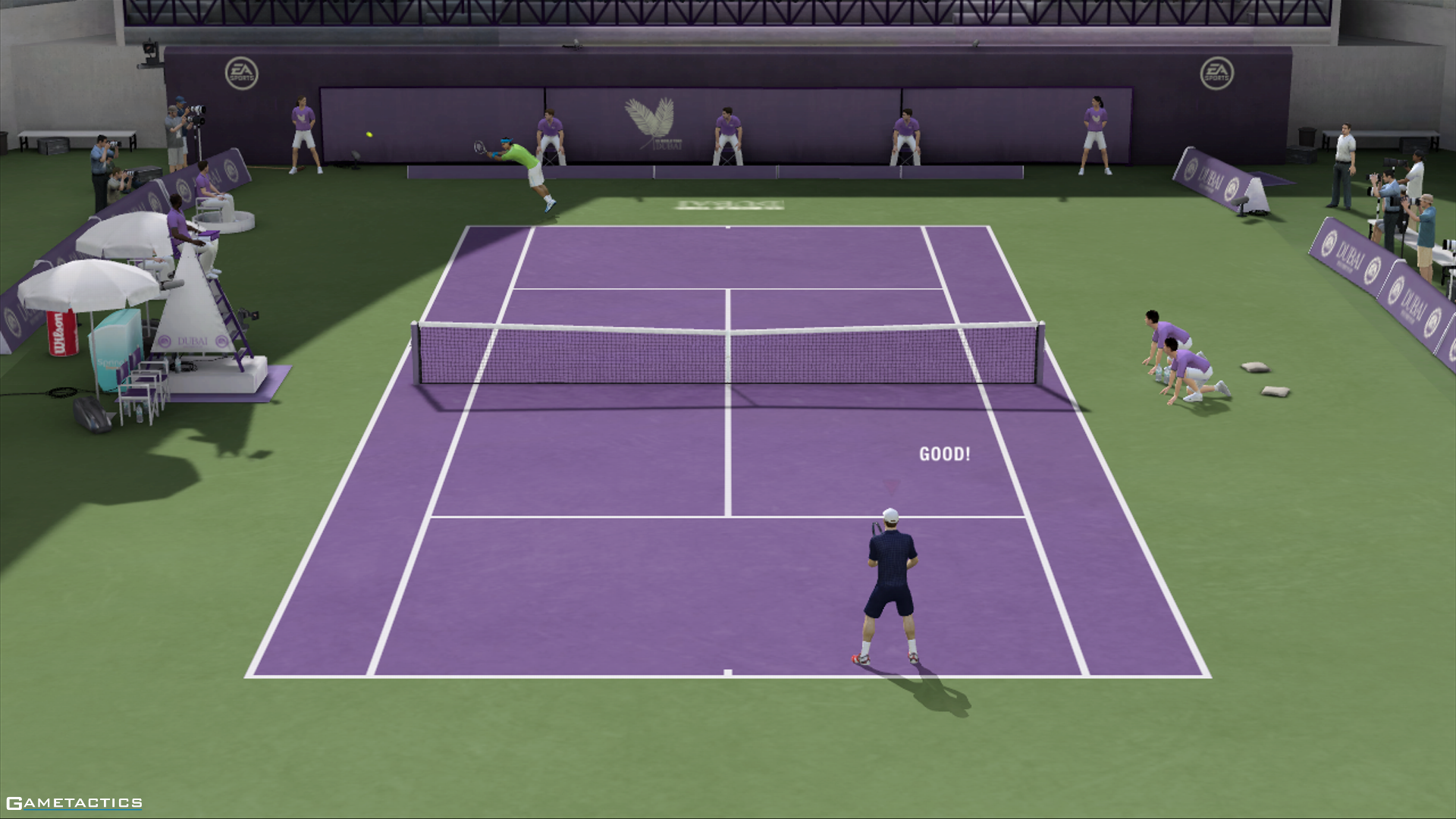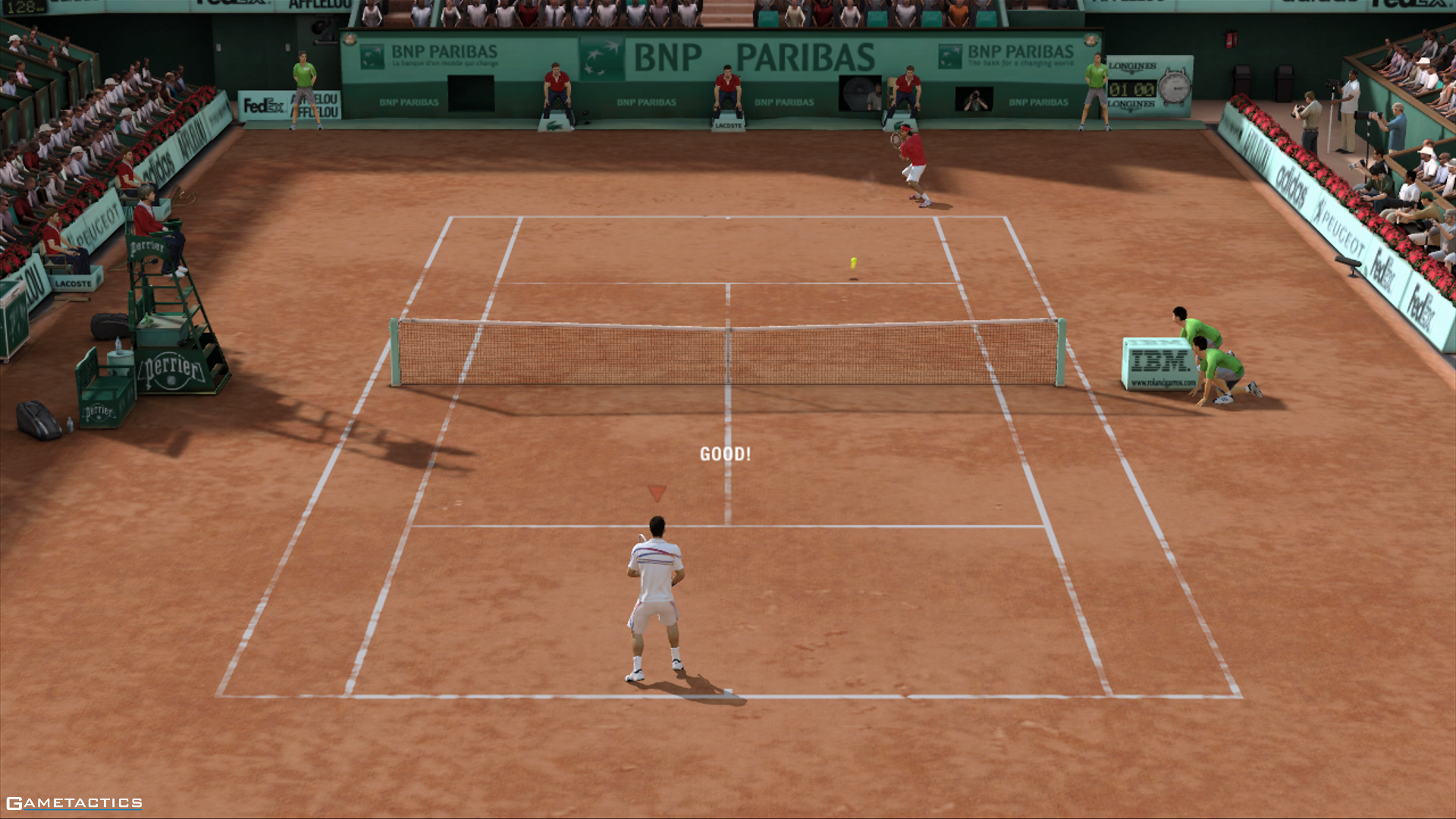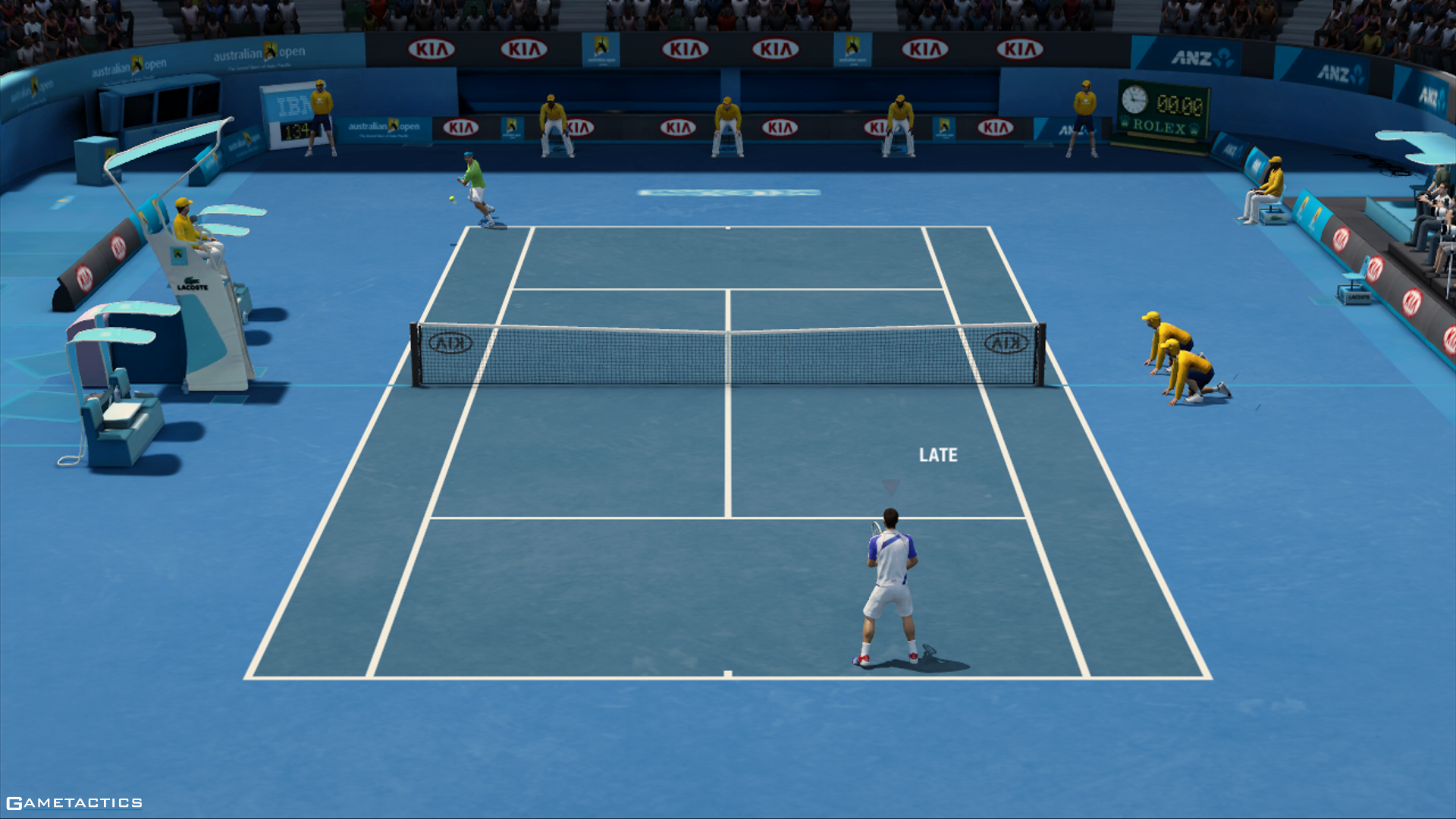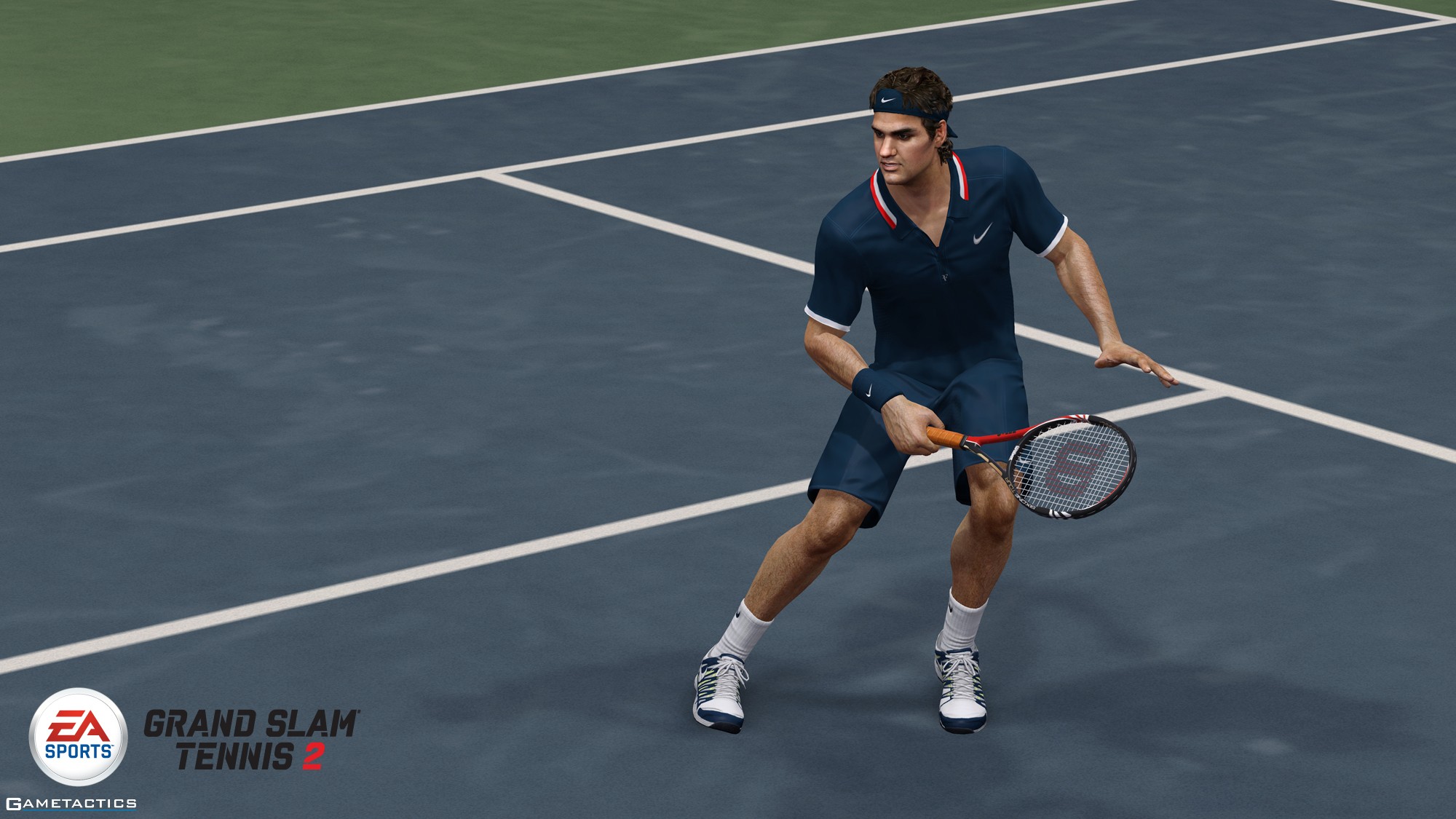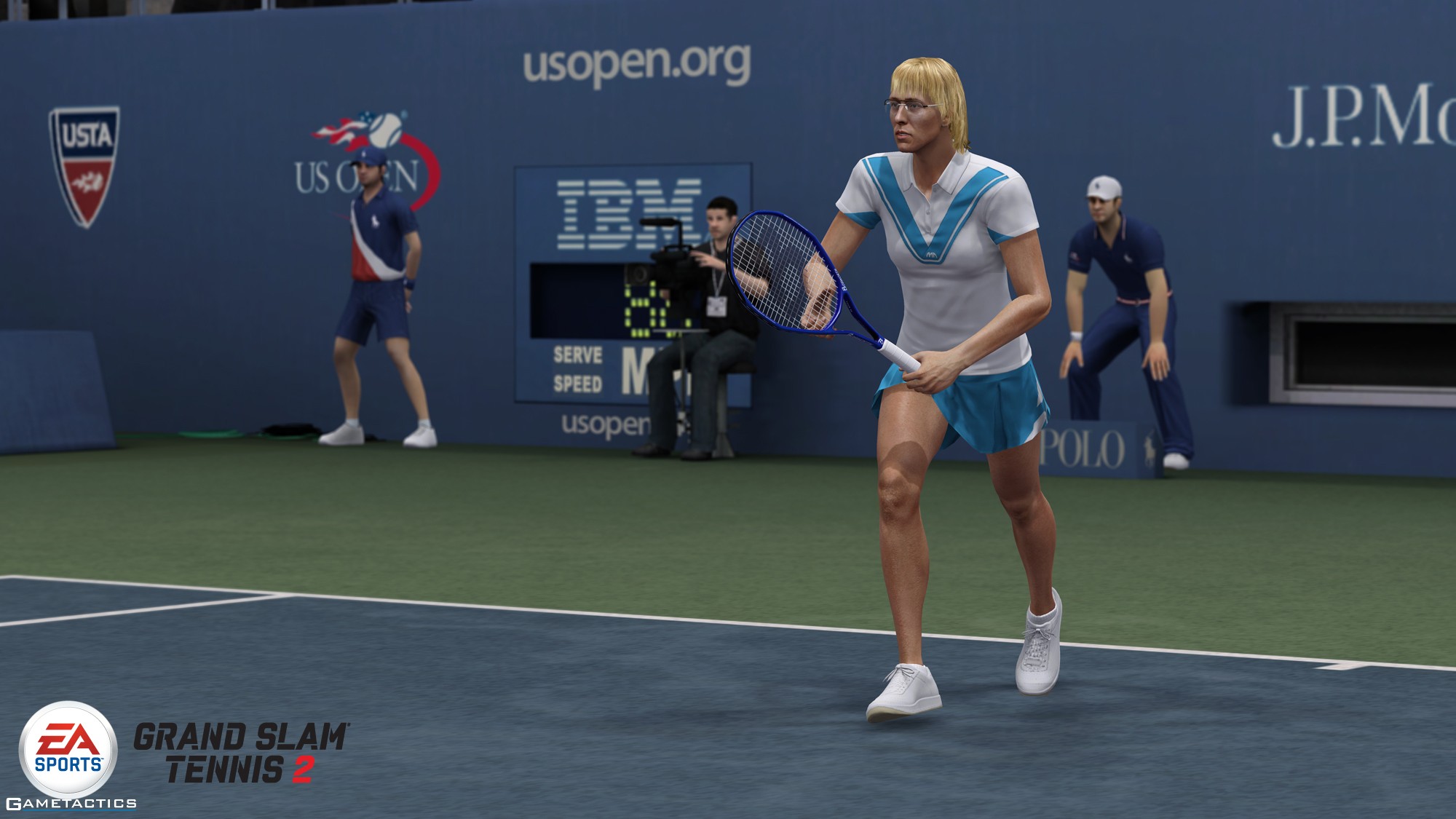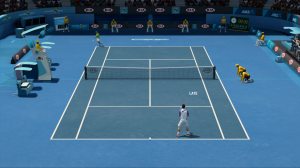 Three years after its franchise debut on the Nintendo Wii, EA Sports’ Grand Slam Tennis is finally back on the shelves, this time on the HD consoles it skipped the first time around and with a renewed emphasis on realism and authenticity. While the PS3 version offers Move support in a similar fashion to the Wii version, the 360 version reviewed here depends on a new dual analog control scheme dubbed Total Racquet Control. The end result is a title that is a reasonable alternative to either the Virtua Tennis or Top Spin series of games, depending on your preferences.
Three years after its franchise debut on the Nintendo Wii, EA Sports’ Grand Slam Tennis is finally back on the shelves, this time on the HD consoles it skipped the first time around and with a renewed emphasis on realism and authenticity. While the PS3 version offers Move support in a similar fashion to the Wii version, the 360 version reviewed here depends on a new dual analog control scheme dubbed Total Racquet Control. The end result is a title that is a reasonable alternative to either the Virtua Tennis or Top Spin series of games, depending on your preferences.
Grand Slam Tennis 2 comes with a variety of play options (for instance a straight up exhibition mode that includes doubles play as well as classics mode where you reenact famous matches with a number of licensed greats like Martina Navratilova, Chris Evert, and Pete Sampras ) , but the real meat of the game is in its career mode, which allows you to play through up to 10 seasons making your way up the world rankings and conquering each of the Grand Slam tournaments: the Australian Open, the French Open, Wimbledon, and the U.S. Open. You can create your own player in this mode, and the options for doing so are fairly detailed, including the ability to import your own face into the game using EA’s GameFace technology, to sometimes uncanny results, as well as a wide variety of clothing and racquets.
Once you’ve begun, before each major Grand Slam tournament of the season you have a couple of chances to either play in a small preview tournament on a similar type of court to up your ranking and career progress, head to a training court to increase your abilities by hitting targets with specific shots, or play a one on one exhibition to unlock better racquets and other gear that boosts your stats, with special rivalry matches giving greater rewards. Each match you play against an opponent, whether in a tournament or exhibition, allows you to decide the length (depending on gender, anywhere from 1 to 5 sets, with 3 to 6 games each), so you don’t have to commit a ton of time to clearing an event if you don’t want to. However, since each match comes with a set of bonus objectives, it is often advantageous to play a longer match in order to give yourself a better chance of achieving them. As you progress through a tournament, and also through the season, the difficulty increases, although on the default setting the difficulty curve is quite gradual and you will find yourself winning a lot early on, so you may want to go into the options to tweak it if it becomes a bore.
Still, you will want to take it slow at first to become accustomed to EA’s new control scheme. For those familiar with the NHL series, the formula is actually somewhat familiar. The left thumb stick controls your movement, while the right thumb stick dictates the swing of your racquet. This allows for more realism as the timing, speed, and aim of your swing are accounted for in one smooth motion, also allowing for more granularity and variety than a mere press of the top spin or slice button (instead you pull back, then push forward for top spin, only pull back for a slice, etc.). The first impulse is to step into the Training mode on the main menu when you first start the game, but that logical choice is punished by the poor coaching of John McEnroe, who really provides no tips at all and simply berates you for failing. Why EA Sports thought a man most famous for his explosive temper would make an effective trainer for their complicated control scheme is beyond me. Really guys? As McEnroe himself would say, “You cannot be serious!” The funny thing is though I failed miserably at hitting targets in the training mode I had no trouble hitting the ball where it needed to go in an actual match, so I suggest not fretting over it too much. One thing I noticed at least at the beginning difficulty is that it’s actually terribly difficult to hit the net or knock a ball out of bounds even if you mistime a swing badly, though it’s a bit more picky about your serves. The other thing is while the game gives you instant feedback on the timing of your swings (the words EARLY, LATE, etc. flash up next to your player), it neglects devoting any sort of attention to your footwork, even though it plays a key role in the outcome of a swing, being set or stepping into a swing gives you noticeably greater control and power than when you’re running for the ball or otherwise off balance.
The other major gameplay feature EA touts is what it calls its P.R.O. AI system (Professional, Realistic, and Organic). What this means is that the developers aimed to replicate how the pros really look and play. Not only are the player models fairly photorealistic, but their play style matches their game in real life. I personally follow tennis from time to time, and stars like Federer, Nadal, and the Williams sisters certainly play to their reputations. Each player, including the random computer generated ones, is categorized by their specialties (offensive and defensive backliners, all court players, serve and volley specialists) and this helps you decide your approach to each match, as all the styles have their weaknesses. Where the organic part comes in is how the AI adjusts to your strategy. If you consistently win points by cheating a little to one side of the court in anticipation of a return, the computer will mix it up and catch you just a step off balance. A few times I found myself having to rally hard to win points and actually falling behind after cruising through an early game or set, because the AI begins to do something completely different that you have to spend a few points figuring out again. There is certainly a limit to it depending on the difficulty you set, so it doesn’t go totally robotic on you. However, the nice part of it is you will rarely get through a whole match just doing the same 3 shot sequence like in many previous tennis games.
Finally there is the online component to the game, which features a typical head to head matchmaking mode in either ranked or unranked singles or double play as well as a single elimination tournament mode in which you not only play for your personal ranking but also your nation’s standing on a worldwide leaderboard, which is a rather interesting twist. There is also what is called the Grand Slam Corner, where you play matches at each of the Grand Slam venues in order to fight for the best ranking on each court. I mostly tried the matchmaking where I ran into the usual pitfalls of being matched up against people well above my skill level, though I suppose that’s something that can be resolved with a little more practice. The good news is that there is very little lag and not a long wait time to just jump into a match, so it isn’t a hassle to get into and improve yourself in.
Graphically, Grand Slam Tennis 2 is quite impressive. The licensed players not only have the faces and body builds of their counterparts, but wear many of the same clothes, for instance most of Venus and Serena’s dresses are in the game and they feature different ones at each Grand Slam tournament. Not only that, but their animations are true to their real life serves and swings. Each court surface is replicated realistically as well, with dust being kicked up on grass and clay surfaces as well as footprints made in the latter while players slide into returns. Stadiums are recreated faithfully and the polygonal crowd reacts appropriately. All in all there is little to find fault in.
I wish the same could be said for the audio, or rather more specifically, the commentary. For the money they likely spent hiring John McEnroe and his ESPN colleagues for their part in the game, EA Sports should have gotten a lot more. Once you’ve played one match, you’ve literally heard all the lines they have to offer. I muted them after hearing about how there is no downside to hitting the ball deep on your opponent the 12th time in the same tournament. It’s a definite step backward from EA’s other offerings. At least once you turn down all the yakking, you get to appreciate the solid work put into the sound effects, not only the racquet hits, but the foot work and the grunts of the players as well as the cheer of the crowd in certain situations is replicated quite faithfully. It’s safe to say between this, the graphics, and the overall presentation, Grand Slam Tennis 2 passes the “just like TV from a distance” test for a sports game these days.
All in all, EA Sports has done the sport well with this late entry into the game in Grand Slam Tennis 2. It perhaps isn’t as simulation oriented as Top Spin 4, but it’s certainly plenty realistic itself and more serious than SEGA’s Virtua Tennis offering. Of course, it also benefits from the exclusive licensing of Wimbledon, so if you really want to get your Grand Slam on, this is the only real option. The only thing missing is a bit more charm, which could be improved with better commentary and some more variety to the main career mode and multiplayer modes.
Gameplay
Graphics
Sound
Overall

